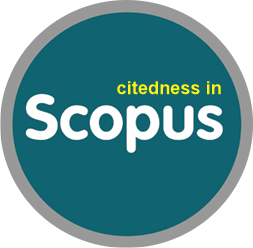Identification of Factors Causing Quiet Quitting in Organizations Based on the Perspective of Literature Studies
DOI:
https://doi.org/10.32493/JJSDM.v8i2.44814Keywords:
Quiet Quitting; Job Dissatisfaction; Poor Communication; Lack of Career Development OpportunitiesAbstract
The advancement of technology, the era of Industry 4.0, and the COVID-19 pandemic have introduced significant changes in the business world, affecting both organizations and employees. These shifts have contributed to the phenomenon of quiet quitting, where employees reduce their commitment to work without formally resigning. This phenomenon often emerges as a response to burnout, work-life imbalance, and high expectations from employers. This study compiles various research to analyze the contributing factors and negative impacts of quiet quitting on organizations. Findings indicate that quiet quitting is driven by job dissatisfaction, poor communication, lack of career development opportunities, and unsupportive organizational culture. The results highlight the importance of creating a positive work environment, fostering effective communication, and providing career development opportunities to mitigate the adverse effects of quiet quitting. Further research is needed to explore in depth the factors contributing to quiet quitting and to design more effective strategies for its prevention.
References
1. Ali, S. (2022). Evaluating the Effect of COVID-19 on Mid-Level College Administrators’ Roles at Four-Year Private Institutions in New Jersey. Journal of Economic Perspectives, 2(1), 1–4. http://www.ifpri.org/themes/gssp/gssp.htm%0Ahttp://files/171/Cardon - 2008 - Coaching d’équipe.pdf%0Ahttp://journal.um-surabaya.ac.id/index.php/JKM/article/view/2203%0Ahttp://mpoc.org.my/malaysian-palm-oil-industry/%0Ahttps://doi.org/10.1080/23322039.2017
2. Bell, R. L., & Kennebrew, D. (2023). What Does Jean-Jacques Rousseau and Chester I. Barnard Have to Do With Quiet Quitting? American Journal of Management, 23(1). https://doi.org/10.33423/ajm.v23i1.5869
3. Budi, B., Wiwiek, A., Adawiyah, R., & Zulaikha, S. (2023). Quiet Quitting Phenomenon among Gen Z : The Influence of Toxic Workplace Environment on Quiet Quitting Moderated by Organizational Commitment.
4. Cieniewicz, A. G. (2016). Commitment Profiles of Federal Government Employees Who Telework: A Qualitative Study (Issue May 2013) [Coastal Carolina University]. https://www.ncbi.nlm.nih.gov/books/NBK558907/
5. Engelman, J. N. (2022). The Concept of Humble Leadership to Strengthen Employee Performance During the COVID-19 Pandemic in an International Corporation in Germany. Barry University.
6. Harvey, S. D. (2024). Qualitative Case Study On The Relationship Between Workloads And The Impact It Has On Employee Job Satisfaction.
7. Lombardo, L. (2021). The impacts of remote working on employees’ psychological wellbeing: an empirical study of the Italian public administration. https://www.politesi.polimi.it/handle/10589/183474%0Ahttps://www.politesi.polimi.it/bitstream/10589/183474/3/TesiLombardo_Finale.pdf
8. Luchs, C. (2023). Instructional Design: A Workforce Perspective for 2023. TechTrends, 67(1), 4–6. https://doi.org/10.1007/s11528-022-00818-6
9. Mahand, T., & Caldwell, C. (2023). Quiet Quitting – Causes and Opportunities. Business and Management Research, 12(1), 9. https://doi.org/10.5430/bmr.v12n1p9
10. Morrison-Beedy, D. (2022). Are We Addressing “Quiet Quitting” in Faculty, Staff, and Students in Academic Settings? Building Healthy Academic Communities Journal, 6(2), 7–8. https://doi.org/10.18061/bhac.v6i2.9309
11. Pevec, N. (2024). The Concept of Identifying Factors of Quiet Quitting in Organizations: An Integrative Literature Review. Izzivi Prihodnosti, 8(2, May 2023). https://doi.org/10.37886/ip.2023.006
12. Pratiwi, P. E., Stanislaus, S., & Pratiwi, P. C. (2023). The Tendency of Quiet Quitting Workers in Terms of Engagement and Well-Being at Work. Philanthropy: Journal of Psychology, 7(2), 132. https://doi.org/10.26623/philanthropy.v7i2.7905
13. Ratnatunga, J. (2022). Quiet Quitting: The Silent Challenge of Performance Management. Journal of Applied Management Accounting Research, 20(2), 13–20.
14. Serenko, A. (2024). The human capital management perspective on quiet quitting: recommendations for employees, managers, and national policymakers. Journal of Knowledge Management, 28(1), 27–43. https://doi.org/10.1108/JKM-10-2022-0792
15. Shah, D., & Parekh, M. (2023). Understanding Work-Life Balance: An Analysis of Quiet Quitting and Age Dynamics using Deep Learning. International Research Journal of Engineering and Technology, September, 1230–1235. https://doi.org/10.13140/RG.2.2.21097.47204
16. Smith, R. A. (2022). Quiet Quitters Make Up Half the U.S. Workforce, Gallup Says. The Wall Street Journal.
17. Yikilmaz, İ. (2022). Quiet Quitting: a Conceptual Investigation. ANADOLU 10th International Conference On Social Science, October, 581–591. www.anadolukongre.org
18. Yildiz, S. (2023). Quiet Quitting: Causes, Consequences and Suggestions. International Social Mentality and Researcher Thinkers Journal.
Downloads
Published
Issue
Section
License
Copyright (c) 2025 Eva Safariyani, Alan Fajar Fadillah

This work is licensed under a Creative Commons Attribution 4.0 International License.
Authors who publish in this journal agree to the following terms:
The author owns the copyright of the article and assigns to the journal the right of first publication with the work simultaneously licensed under the terms Atribusi 4.0 Internasional (CC BY 4.0)
 which allows others to share the work with acknowledgment of the work's authorship and initial publication in this journal.
which allows others to share the work with acknowledgment of the work's authorship and initial publication in this journal.Authors may enter into separate additional contractual arrangements for the non-exclusive distribution of the published journal version of the work (for example, posting it to an institutional repository or publishing it in a book), with acknowledgment of the work's original publication in this journal.
Authors are permitted and encouraged to post their work online (for example, in institutional repositories or on their websites) before and during the submission process, as this can lead to productive exchanges, as well as earlier and larger citations of published work (See The Effect of Open Access).






























.png)





